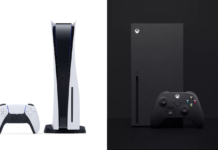Pretend we’re playing a word association game, like the kind you have to play with your psychiatrist before he hands over your Adderall prescription. Ready? I say “Nintendo,” you say “Mario.” I say “Sega,” you say “Sonic.” I say “Microsoft,” you reply, “Master Chief?”
I say “Sony.” You pause. “..I don’t know, Crash Bandicoot?”
Don’t worry – it’s not your fault. Even in the golden era of video game mascots (the early-to-mid-90s, mostly), Sony struggled to come up with an icon that could compete with the likes of its competitors. Not that they didn’t try, of course; Crash just happens to be the one that came closest to becoming a household name. Throughout the reigns of the PS1 and PS2, plenty of other contenders came close, like Spyro, Daxter, Lara Croft, Cloud Strife, Solid Snake and Dante.
But their popularity never entirely took off, and besides, simply being in a console exclusive game does not make a character a mascot. And today, most of those old Sony characters have appeared on multiple systems anyway. So what does make a mascot?
Console exclusivity is a part of it, but true mascots, like Mario, Sonic, and Master Chief, are identifiable with their respective brands for more deep-seated reasons. They personify those brands; they represent their companies’ strengths and weaknesses, habits, personalities and attitudes. Like the Chief, Microsoft dominates its competition with brute force and the occasional spark of ingenuity. Sega, brash and reckless, grew into a superpower and hurtled toward relative ruin faster than Sonic can run. Mario is charming, instantly recognizable, and, as a turtle-trouncing plumber, totally impractical – just like many of Nintendo’s products; just look at the N64 controller or the waggle-ready Wii.

Gaming mascots never really died; there just haven’t been any new ones in a while. As console exclusives come and go, many getting ported to other systems, characters like the Big Daddy, the King of the Cosmos, and Gordon Freeman become icons in and of themselves rather than representatives of a single brand. Glancing at Sony’s ever-growing stable of exclusive PS3 and PSP titles, though, it starts to seem like they never really stopped trying at all. Kratos, Ratchet and Clank, Nathan Drake, and even Metal Gear Solid 4’s Old Snake have all come to represent Sony’s consoles in one way or another, and even the enigmatic Kevin Butler is a hit in his own right. Still, I believe there’s only one Sony character that can truly be called a mascot: Sackboy.
Sackboy is, in fact, the perfect personification of Sony. He’s creative, quick to take risks, and often overestimates his own abilities. The PSP Go by itself demonstrates all of these qualities in Sony as a company; leading up to its release, they were unabashedly enthusiastic about their little nugget of failure, but ultimately, they couldn’t support its digital download-only model. Apply the same to the original $600 PS3, the EyeToy, etc.
But like Sackboy, all these products have been endearing in their own ways. Ask any owner of an original PS3 (myself included) how they like their nearly comprehensive backwards compatibility. Likewise, PSP Go owners often swear by them, and just the other night, I spent a drunken and raucous evening playing EyeToy mini games with friends.

Like Sackboy, Sony can assume a multitude of personas. Just check out their most recent slogan for the PS3: “It only does everything.” This past year has seen a smaller and sleeker PS3, a blessedly competitive price point, and the release of the Move motion controller. Four years ago, the console was a specialty machine for the hardest of the hardcore gamers and Sony fanboys. Now it’s meant for everyone, and its burgeoning sales in 2010 attest to the success of Sony’s new strategy.
It seems the company’s taken a page out of Sackboy’s book, and in doing so, has finally created their perfect mascot. If Little Big Planet 2 gets its hooks in the PS3’s newly expanded audience, he may even get to stick around a while.
Will it mean the true return of the video game mascot? Not really, since, as I said, mascots never really died. We just got used to them. Mario and Link are still Nintendo’s biggest stars, Sonic and Sega are together loping toward obscurity, and besides Call of Duty, Halo is the biggest seller on Microsoft’s consoles.
The rise of Sackboy will mark a historic victory for the PlayStation brand. The ranks of video game mascots are hallowed and few, and the little guy will have some stiff competition. With the future of the Little Big Planet franchise uncertain, the odds aren’t necessarily in his favor, but we, at least, are rooting for him.










